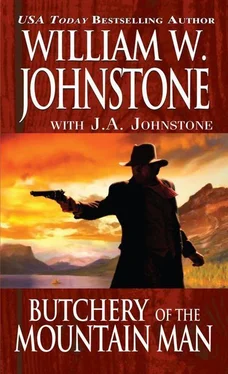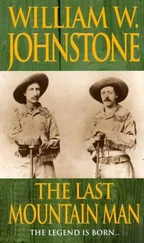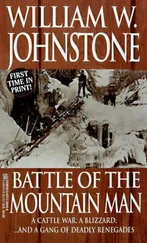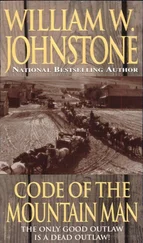
BUTCHERY OF THE MOUNTAIN MAN
WILLIAM W. JOHNSTONE
with J. A. Johnstone

PINNACLE BOOKS
Kensington Publishing Corp.
www.kensingtonbooks.com

All copyrighted material within is Attributor Protected.
PREFACE
In 1923, which is two years before this writing, I undertook the task of putting together a scholarly tome on the Vanguards of Western Expansion. Heroes, Trappers, Indian Fighters, Explorers, Scouts, and Adventurers were to be my subjects, but I faced the immediate problem of deciding who should be the focus of my study. I had many to choose from: Kit Carson, John C. Frémont, James Bridger, Jedediah Smith, Arthur “Preacher” Gregory (though the last name is uncertain), Kirby “Smoke” Jensen, Matt Jensen, Ian MacCallister, his son Falcon MacCallister, a cousin, Duff MacCallister, and John “Liver-Eating” Jackson. Most will agree that all warrant their own book, and in many cases those books have, indeed, already been written.
But the decision was made for me when I realized that as of October 1923, the time I began the project, one of the most storied of all the aforementioned heroes, Smoke Jensen, was still alive. Furthermore, my initial investigation led me to the inescapable fact that Smoke Jensen and John Jackson were not only friends, but shared the incredible adventure of Liver-Eating Jackson’s personal war with the Apsáalooke, or, as they are more popularly known, Crow Indians. The decision was made. I would write about Smoke Jensen and John Jackson. I contacted Smoke Jensen and brought him to the University of Colorado, where, by making use of the magic of voice recording, I was able to extract the story herein presented to the reader.
Mr. Jensen proved to be an excellent storyteller, and I apologize to those readers who must absorb this account from the printed page while I was able to actually hear the story from his own mouth. And, because of the transformative power of Mr. Jensen’s spoken words, I was miraculously transported back in time to actually witness the events described here.
Discerning readers will soon realize that Jensen possesses the knack for noting and relating details, which is the prime ingredient of the storyteller’s art. He has preserved a detailed picture of how things were in the century previous. The varied roles he played during his active career involved him in so many different activities that his own life story constitutes a fair approach to an encyclopedia of life on the American frontier.
Quite apart from its informational value, Smoke Jensen’s story provides grand entertainment for the general reader. The scholar, however, intent upon reconstructing accurately the life of the past, will naturally ask how faithfully Smoke Jensen has recorded it.
Smoke Jensen’s memory is quite detailed and astonishing. He can recall all the interesting experiences of his own eventful life, and the day and date of almost everything that has happened in the mountain region within the last sixty years. I have included in this book Jensen’s verbatim accounts, recalled from his personal participation, as well as his recollection of stories relayed to him by his friend John Jackson.
I have also included, at various places through the book, editorial inserts if I believe that I have ex cathedra information that will enhance the readers’ appreciation of the story herein told.
Jacob W. Armbruster, Ph.D.
Professor of History, University of Colorado
Boulder, Colorado
April 9, 1925
CHAPTER ONE
Office of the President of the University of Colorado—September 1923
“I have taken your proposal to the Board of Regents,” Dr. Norlin said. “And, I might add, I did so with my own, heartiest recommendation that it be approved.”
“And?” Professor Armbruster said.
Dr. Norlin smiled, then slid the papers he was holding across the desk. “The approval was unanimous. You will be given the time, the resources, and an intern to help you with your project. What are you going to call it?”
“I’m going to call it Vanguards of Western Expansion .”
“And it is our understanding that you plan to publish it?” Dr. Norlin asked.
“Yes, Runestone Press has agreed to publish it. In my proposal, I offered thirty percent of the royalties to the university. They were okay with that?”
“Well, they do have a counterproposal,” Dr. Norlin replied. “They thought that because you would be researching and writing this book on university time, as well as using university assets, that a fifty-fifty split would be more appropriate.”
Professor Armbruster stuck his hand across the desk. “Agreed,” he said.
Dr. Norlin chuckled. “You had actually planned that all along, hadn’t you?”
“Yes. I figured if I offered thirty percent . . . but agreed to giving up half, that the Board of Regents would feel a sense of accomplishment.”
“I’ll never say a word,” Dr. Norlin replied with a smile. “What is your first step?”
“My first step is to invite Kirby Jensen to come to the university for interviews, and hope that he agrees.”
“Do you think that he will?”
“I don’t know. I certainly hope so. If he doesn’t, this project is dead before it even gets off the ground.”
“Well, I wish you the best of luck in getting him to come,” Dr. Norlin said. “I really do believe in your project. I think it would not only be good for the university, I think it would also be a good resource for historians who are studying the western expansion for many years to come.”
Sugarloaf Ranch
Smoke was sitting in a swing on his front porch, peeling an apple, and throwing the peels to his dog. In front of the house was a Model T Ford, which Smoke had modified. Behind the front seat and extending to beyond the rear axle was a truck bed, about the size of the bed of a buckboard. He called it his motorized buckboard, but some of the younger cowboys on his ranch called it a pickup truck.
Painted on the door of the truck, in arched letters, were the words SUGARLOAF RANCH. Beneath the arch was a picture of a horse’s head, the markings on its face resembling the number seven. Under the horse’s head was the name KIRBY “SMOKE” JENSEN.
Smoke was seventy-three years old, and still fast enough on the draw, and accurate enough with his shooting that he was often called upon to give demonstrations of his skills. The speed with which he could still extract his pistol and fire continued to amaze people.
He saw a cloud of dust billowing up from the road, and because this road ended right here, on Sugarloaf, he knew that whoever it was, was coming to the house. And, from the speed at which the vehicle was traveling, he also knew who it was, even before he could actually see the car.
“You know what I think, Dog?” he asked.
Dog cocked his head at an angle to study Smoke’s face.
“It’s not what I think, it’s what I know. That’s Sally, coming up the road like a scalded-ass cat. I think she only knows two speeds: stop and fast.”
He watched until the car, a light blue Duesenberg phaeton, emerged from the cloud of dust. Thankfully she slowed down before she got too close, so that the dust dissipated before it rolled up onto the porch. Smoke stood, and rested his hand on one of the support posts for the porch roof as he watched her get out of the car.
Читать дальше















